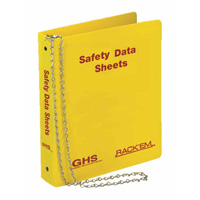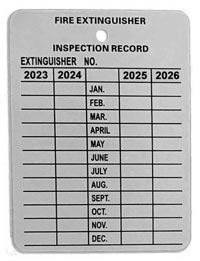| The Home page of ILPI's Safety Data Sheet (SDS) Resource, the leader in SDS information since 1995! | |
| The history and philosophy behind this resource. | |
| A curated collection of books and reference materials concerning Safety Data Sheets and closely related topics. | |
| Paste your plain text SDS into the SDS-Demystifier, and it will be converted into a hypertext-enriched document with links to detailed explanations of each key term. | |
| An extensive list of frequently asked questions about Safety Data Sheets including regulations, content, compliance, and more. | |
| A humorous take on Safety Data Sheet jargon. Fill in the blanks on our entry form to generate a personalized Unsafety Data Sheet to share with your coworkers. | |
| Since 1995, we've maintained this massive curated list of the best places to find Safety Data Sheets on the Internet. | |
| You are here! Way more than a glossary, this hypertext-enhanced resource covers hundreds of SDS-related terms and expert knowledge. Each entry includes both the SDS relevance and links to additional authoritative resources. | |
| Archived results of Safety Data Sheet related polls taken by some of our millions of site visitors | |
| The OSHA regulations behind SDS regulations, including the inspection guidelines and over 400 official interpretations letters under the Hazard Communication Standard | |
| Commercial suppliers of SDS authoring and management software as well as cloud compliance services. | |
| Commercial companies that will create SDS's for your specific needs as well as SDS translation companies. |

Safety signs, banners, and scoreboards? Get yours at Safety Emporium!
Definition

Get your SDS binders, centers and more from Safety Emporium.
The term heavy metal refers to any metallic chemical element that has a relatively high density and is toxic, highly toxic or poisonous at low concentrations. Examples of heavy metals include mercury (Hg), cadmium (Cd), arsenic (As), chromium (Cr), thallium (Tl), and lead (Pb).

"Heavy metal" also refers to a form of rock and roll music, but such references are unlikely to be found on Safety Data Sheets.
Additional Info
Heavy metals are dangerous because they tend to bioaccumulate. For example, marine organisms can consume a particularly dangerous form of mercury called methylmercury. When fish eat these organisms, the methylmercury is not excreted, but is instead retained in bodily tissues. The older the fish and the more contaminated organisms it has consumed, the greater the amount of methylmercury in its tissues. When another fish eats the first fish, the accumulated methylmercury is passed up the food chain, eventually becoming hundreds or thousands of times its original concentration. Any organism at the top of the food chain (humans, polar bears etc.) faces a serious risk of mercury poisoning by eating such fish.
 Here are multiple examples of heavy metal bioaccumulation that are threatening entire ecosystems.
Here are multiple examples of heavy metal bioaccumulation that are threatening entire ecosystems.
Lead poisoning is another example of heavy metal poisoning. Lead is neurotoxic, so individuals whose body is still developing (such as children or developing fetuses) are most at risk. While some aspects of lead poisoning are reversible in adults, in children this can interfere with normal development, cause irreparable brain damage, or kill.
Because of the recognized dangers of these elements, OSHA has established workplace guidelines for the following heavy metals:

Encourage your workers to wear their gloves with stylish safety dispensers from Safety Emporium.
- 29 CFR 1910.1018 Inorganic Arsenic. See also:
- Appendix A - Inorganic arsenic substance information sheet.
- Appendix C - Medical surveillance guidelines.
- Offical Interpretations for this standard.
- 29 CFR 1910.1027 Cadmium. See also:
- Appendix A - Substance Safety Data Sheet.
- Appendix B - Substance Technical Guidelines.
- Appendix E - Cadmium in Workplace Atmospheres.
- Appendix F - Nonmandatory Protocol for Biological Monitoring.
- Official Interpretations for this standard.
- 29 CFR 1910.1025 Lead. See also:
Note: In 2014, researchers at the US National Institutes of Health discovered that mice exposed to low doses of arsenic in drinking water developed lung cancer at levels that are similar to possible human doses. It is a generally accepted principle that no level of arsenic exposure is safe. The US EPA has only recently phased out its use as an herbicide in most applications, although exceptions still apply for a few select industries, exceptions that should be ended.
Heavy metal exposure occurs through three primary routes:
- Inhalation. Common examples include workers scraping or sanding lead paint and workers in factories where heavy metals are melted and processed. In the days before leaded gasoline was banned, those living alongside heavily traveled roads faced significant exposure through tailpipe emissions.
- Ingestion. The leading cause of lead poisoning in children is eating old paint chips. A major source of elevated mercury levels in humans comes from eating contaminated fish. And people can drink arsenic from wells contaminated by arsenic-containing pesticides.
- Skin absorption. Day to day contact with heavy metals can cause poisoning. Dermal exposure is a serious concern for workers in fields where the irrigation water contains naturally-occuring arsenic (such as Asian rice paddies). See Environ. Sci. Technol., DOI: 10.1021/es903667.
SDS Relevance
If you are occupationally exposed to heavy metals, your workplace should have written protocols in place to minimize your exposure. A variety of controls such as eliminating or minimizing the use of such materials, the use of fume hoods, respirator requirements, medical monitoring and more may be required.
Presumably, employers should be taking care to ensure that no worker is exposed to potentially harmful levels of any substance. However, this is not always the case, so be vigilant. Be sure to read the Safety Data Sheets for any heavy-metal containing materials very closely. These should describe the symptoms of poisoning and chronic effects of exposure.
Heavy metals are fetotoxic, so women of child-bearing age should avoid any exposure to heavy metals. Note: the U.S. Supreme Court has declared it illegal under the Pregnancy Discrimination Act for employers to bar women from jobs that may expose them to lead or other toxins! See this OSHA Interpretation Letter on the ruling or this EEOC PDA fact sheet for more information.

Keep a record of your fire safety equipment inspections with tags from Safety Emporium.
Further Reading
- See the links above under Additional Info for workplace regulations.
- ATSDR has a ToxFAQ's on arensic, cadmium, chromium, lead, mercury, thallium and more.
- Mercury in the laboratory. Explains the dangers of elemental mercury and includes other links.
- Cadmium overview at US OSHA.
- This Canadian site has nice info about occupational and non-occupational exposure to cadmium.
- Lead Toxicity a multipage on-line course at the US CDC. Additional case study courses are also available on other heavy metals and toxic substances.
- Heavy metal poisoning at the US NIH's Genetic and Rare Diseases Information Center.
- Mercury in the food chain from the Canadian government.
- The US EPA's page on Monosodium Methanearsonate (MSMA), an Organic Arsenical, a substance that should have been banned decades ago.
- Lead clean-up in Nigerian village is life-or-death race against time (2010) is about the world's worst recorded outbreak of lead poisoning.
- Summary of United Automobile Workers v. Johnson Controls, 499 U.S. 187 (1991) at Justia.com
- Bringing clean water to the developing world is a noble cause with unintended consequences. See The Lethal Water Wells of Bangladesh at the New York Times (real news, not fake; subscription may be required).
See also: alopecia, nephrotoxin, reproductive toxin.